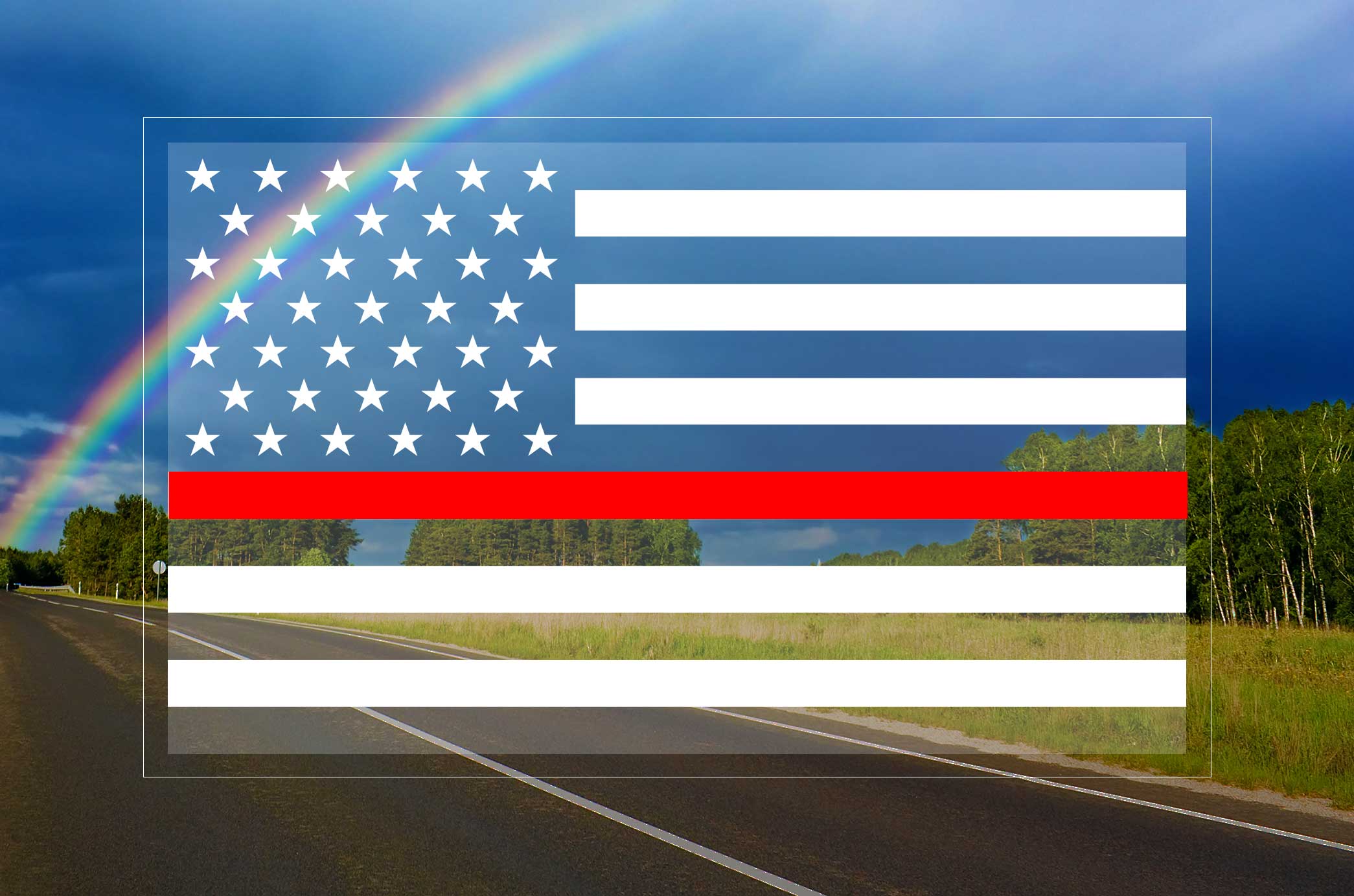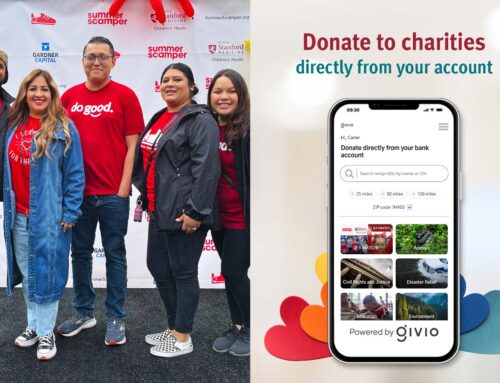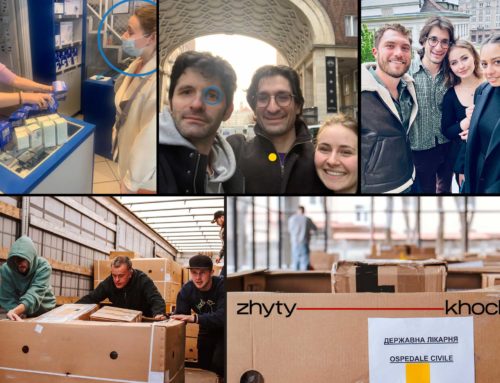Editor’s note: Givio is home to more than 6,000 volunteer fire departments and rescue squads, those unsung heroes who spend their days, nights, and holidays pulling people from wrecked vehicles, restarting hearts, dousing fires, and so much more. This July 4th they’ll be as busy as ever, mostly due to fireworks mishaps and drunk driving crashes. Which is why we’re asking that you support your local first responder unit today with a donation.
This is the true story of one family member’s recent experience in the moments and hours after a fatal, multi-vehicle crash.
A gorgeous summer evening, post-storm rainbow in the distance. Music fills the pickup’s cab and its driver thinks, life is good. Then comes a concussive blast from behind so powerful the driver temporarily blacks out. He comes to with his truck shuddering to a stop on the shoulder.
To his left, a badly damaged white minivan spins to a stop in the middle of the highway; in his rearview mirror, an equally damaged black minivan shudders to a stop, smoke pouring from its engine.
Adrenalin pumping, he climbs from his vehicle, briefly inspects the torn and crushed metal that seconds earlier constituted his pickup bed, then runs to the smoking minivan.
No Looking Away
In the front passenger seat, a badly injured man mutters incoherently, blood streaming from his head. Reaching into the van, he pulls the injured man from his seat, drags him to the highway’s shoulder, and places a towel against a gaping wound on his scalp. “Hold this here, tight,” he says, then returns to the van for its female driver.
He watches, incredulous, as vehicles continue to pass between the wreckage, their tires grinding across broken metal and glass. “They couldn’t stop to help, didn’t want to be delayed. It was depressing,” he’d recall.
The driver’s body is tightly pinched between the crushed-in dashboard, steering wheel, and her seat. Another passerby is trying without luck to open her badly damaged door. It’s only then that he spots the elderly woman in the backseat, her body partially squeezed toward the floor.
He reaches through a rear window and discovers that her seatbelt has been twisted and contorted downward, pinning her to the seat and making the buckle impossible to reach. Again and again he pushes his hand through the gap in the seat until his hand is cut and bleeding.
Later, he will recall that his face, as he leaned through the window, was just inches from hers. And so while he is struggling with the seatbelt, while he is reassuring her that he’ll get her out, he watches her mouth words that will not or most likely cannot escape her throat. Later, too, he will discover the woman is nearly the same age as his mother and, incredibly, shares the same first name.
The van continues to fill with a thick, acrid smoke. He is convinced the van is about to burn, refuses to imagine this woman burning to death in the wreckage. He tells her “I’ll be right back” and races back to his pickup to retrieve the fire extinguisher he keeps for just such emergencies. He tosses it to two men standing nearby and they set to work dousing the furiously smoking engine block.
Like a Horror Movie
Back to the seatbelt. After what seems an eternity, his eyes just inches from the woman, he frees the seatbelt, unbuckles it, lifts her tiny frame through the window. He carries her to the shoulder where the injured man who had been seated in front of her still sits, the bloody towel pressed to his head.
As he sits on the shoulder, a girl, perhaps eight or nine, wanders sobbing across the wreckage-strewn highway. “Here sweetheart, come over here,” he says, extending a hand. She wanders over and sits beside him. “My sister,” she says. But he sees no one.
And then he remembers the case of water bottles in the truck, runs to fetch several bottles. On his way back, he sees the second girl, a bit older, clearly the sister the first girl had referenced. Together they walk toward the shoulder. Only when they arrive does the second girl turn and he discovers that one of her arms has been torn off at the elbow.
He races back to fetch another towel, wraps up around the girl’s mangled arm, asks her to hold it in place. “It was like something out of a movie,” he later recalled, “except that I was in it. It was all so surreal.”
He returns to the older woman, who continues to mouth words without sound. He can tell she is badly injured, though there are no obvious signs of trauma. She squeezes his hand, looks away, looks back to him and smiles. She looks away again, and exhales one final time.
Joining the Thin Red Line
A young police officer arrives, then fire and rescue, then more and more. The highway is closed, the sky has grown dark, he returns to his pickup to let them do their work. He watches in his rearview as they work to cut away the roof and free the badly injured drivers of both vans.
A first responder approaches, asks if he’s OK, insists on running some tests. The fire chief arrives, notices the ‘Thin Red Line’ sticker on his bumper. “Are you a firefighter?” asks the chief. He tells him no, that the sticker is a salute to the first responders who a year or so earlier had saved his life during a heart attack.
And while neither of the men articulate as much, there comes the inescapable idea that perhaps his life had been saved by first responders so that he, in turn, could act as one on that highway. That, in a sense, he’d played the role of a first responder and for a time joined the same Thin Red Line he so admired.
Please support your local first responders with a donation, today. If you’re not sure how to find your local, where it is, or what it’s called, you can search the Givio app. There are more than 6,000 nonprofits with the words “Volunteer Fire” in them, alone.
About The Thin Red Line of Courage
The emblem of the “Thin Red Line” was developed by the Apex (NC) Volunteer Fire Department in 1999 to show respect to fallen firefighters and to those who protect our lives and property every day.
When firefighters respond to a call – and even when they make a commitment to become professional or volunteer firefighters – they place their own lives second to those they serve. This “Thin Red Line” of heroic men and women who risk life and limb every day to keep us safe is all that separates us from more serious danger on a daily basis.




